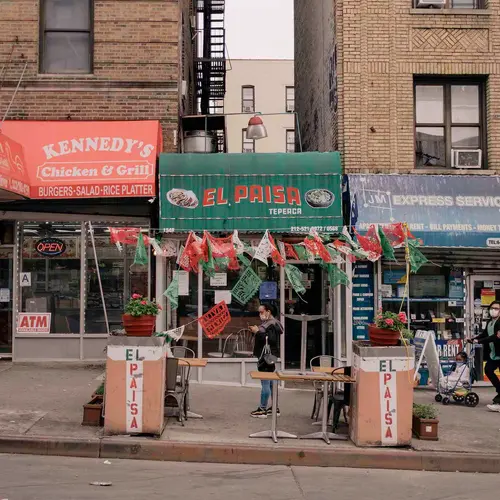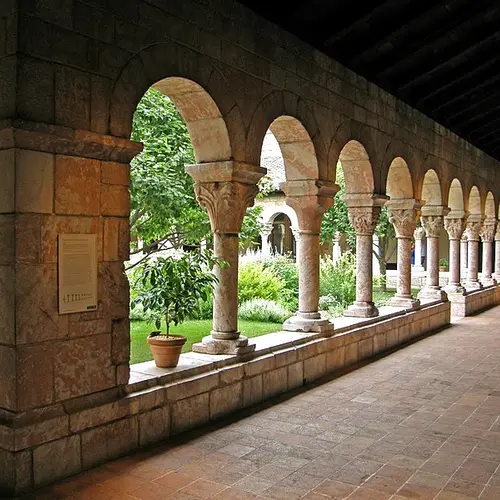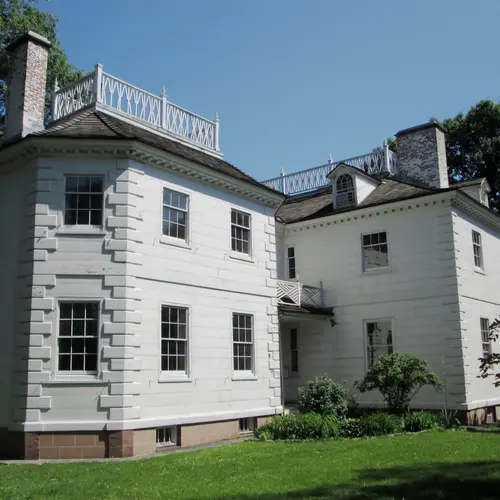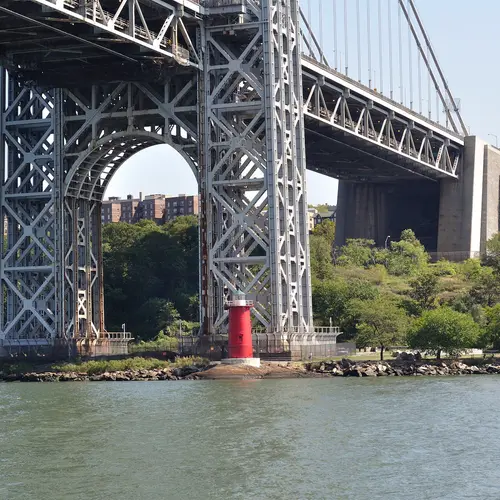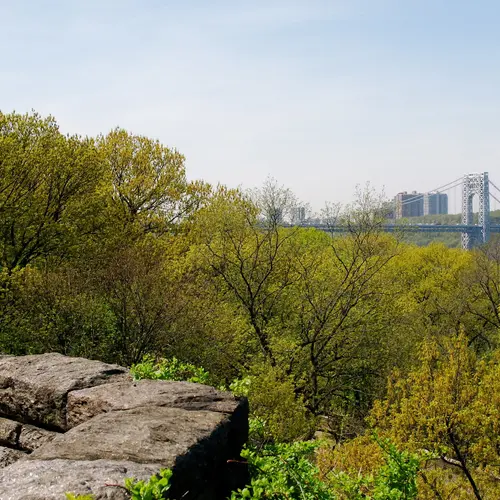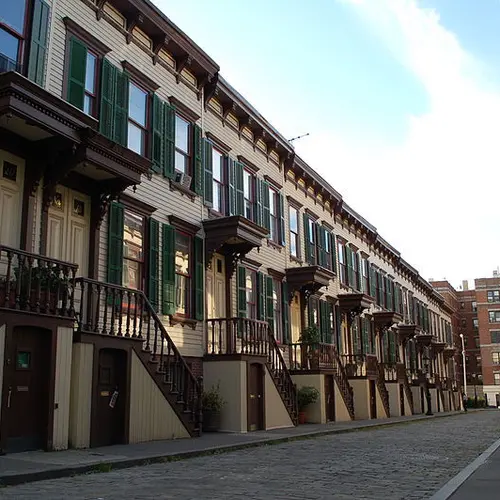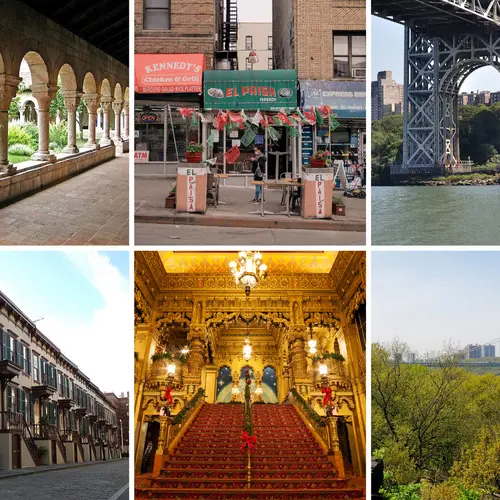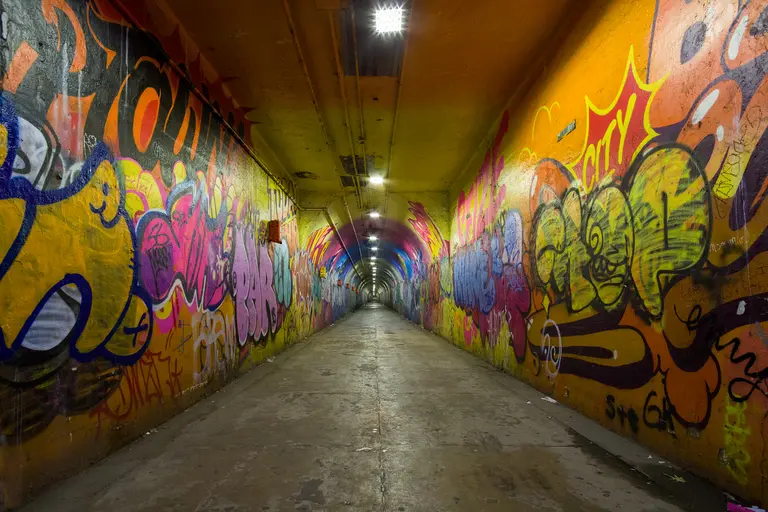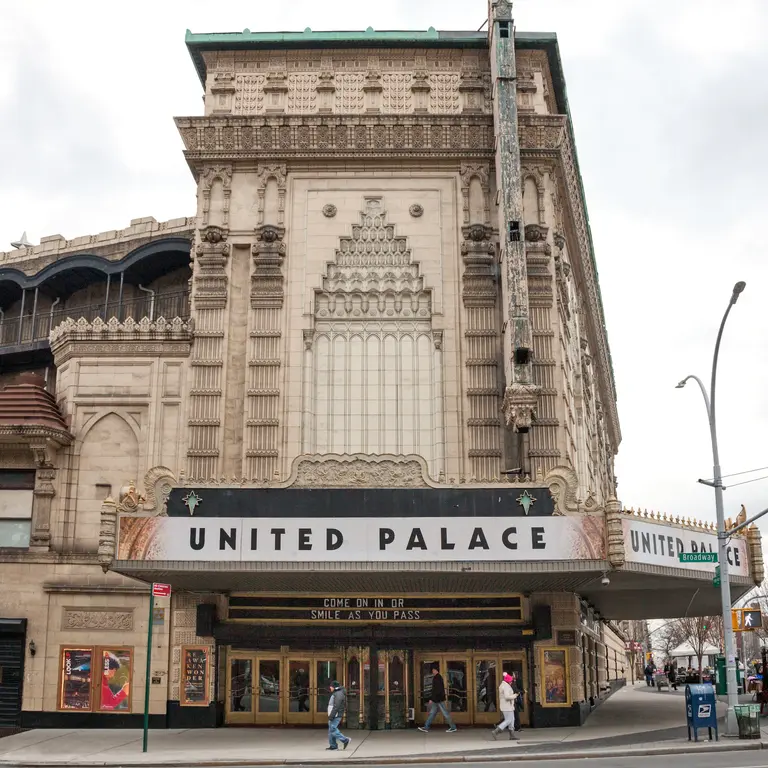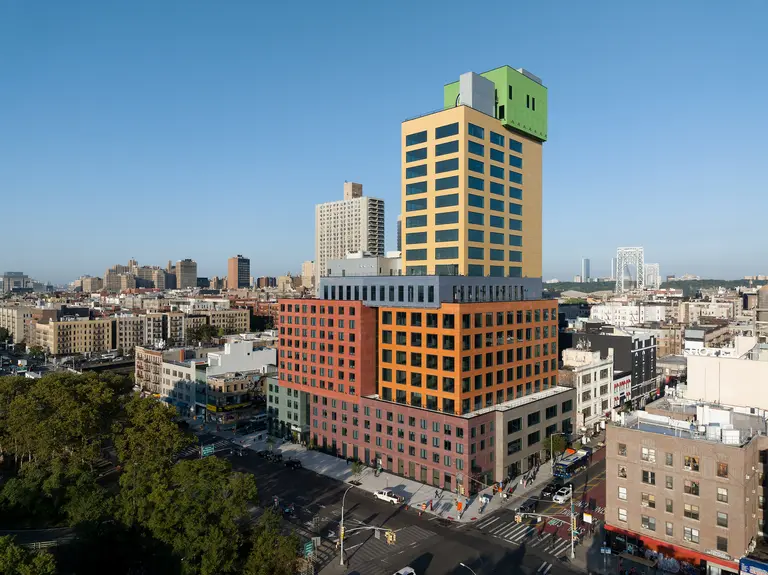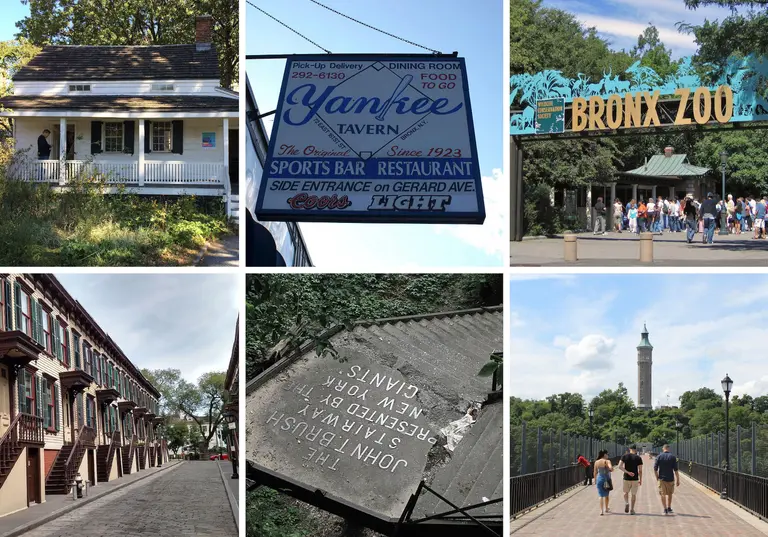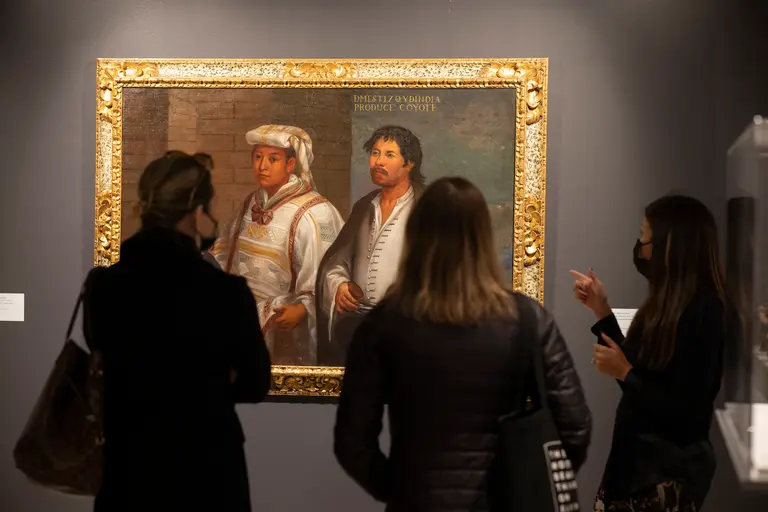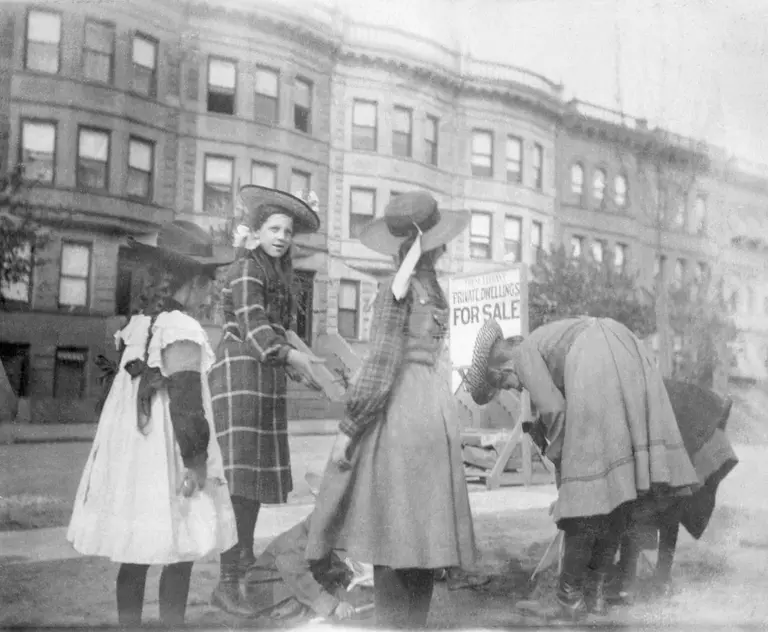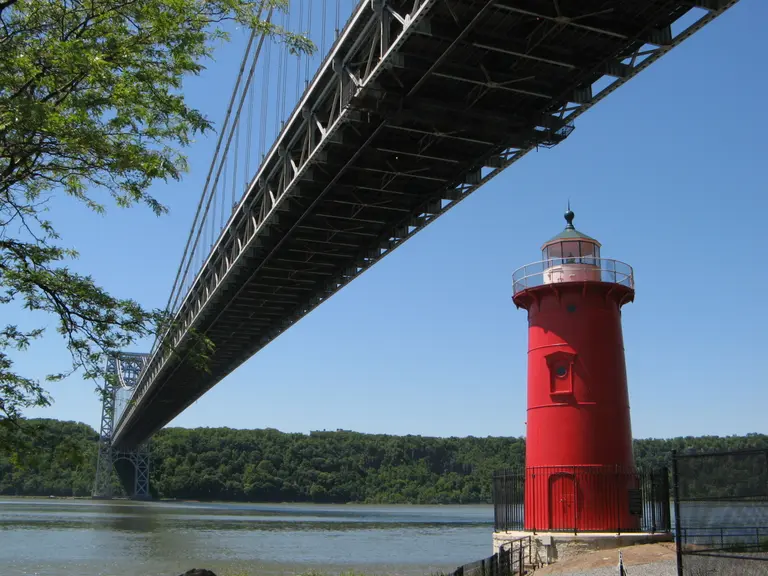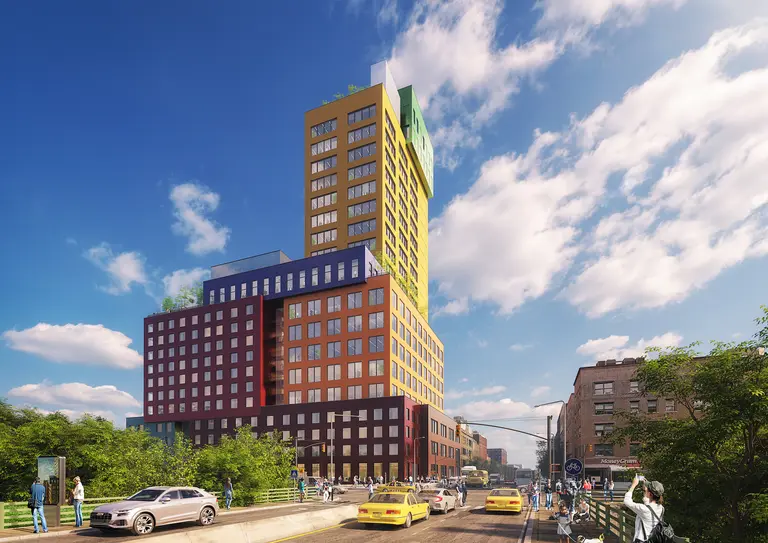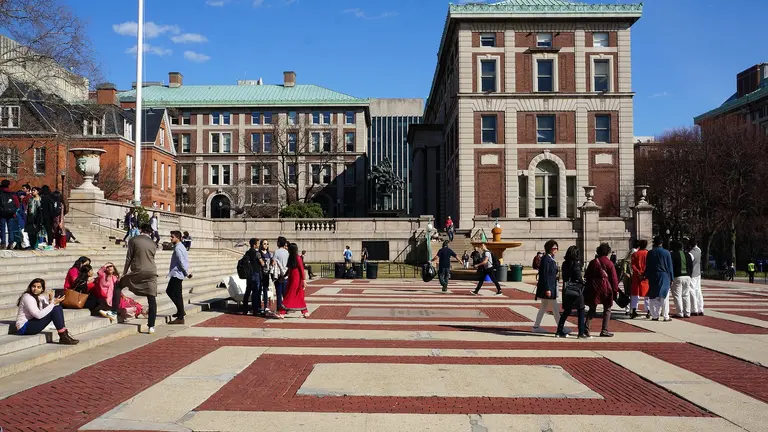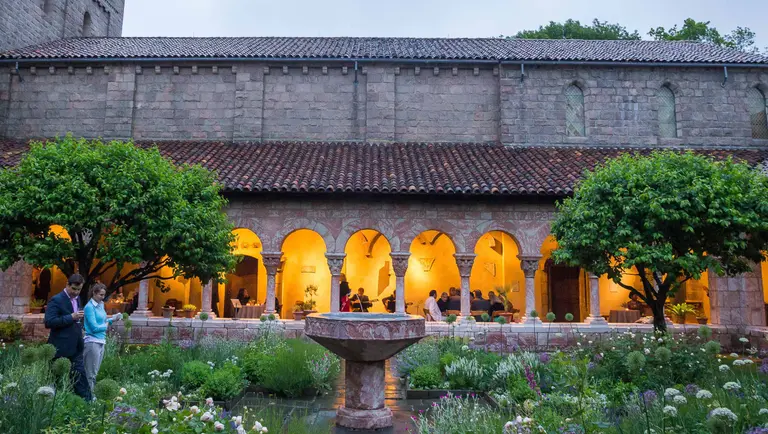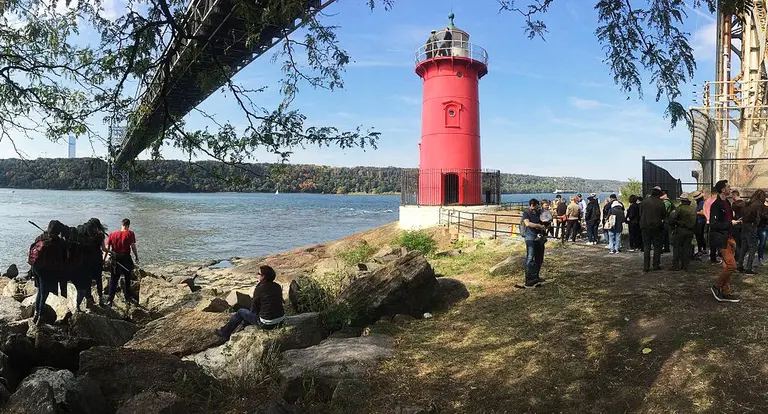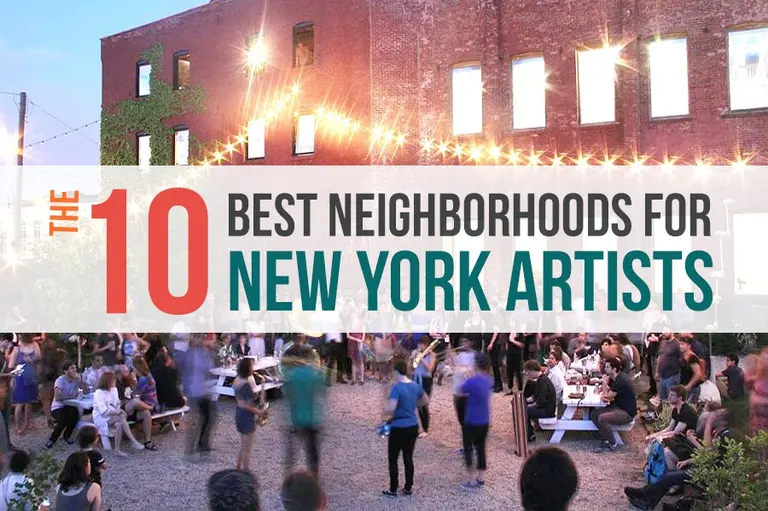The 18 best places to visit in Washington Heights
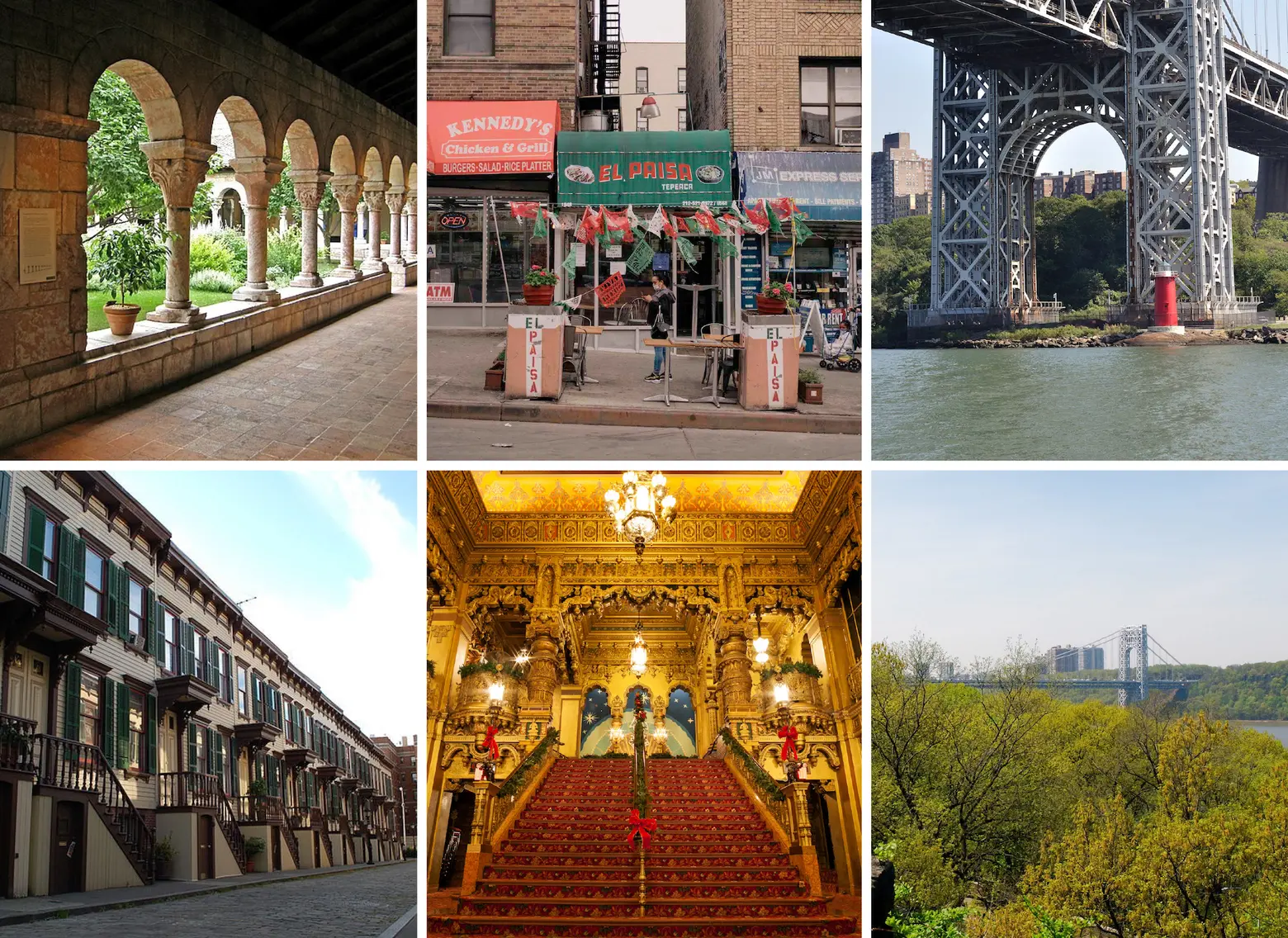
A hilly neighborhood with stunning public parks, incredible food, and community pride, Washington Heights is special. Not only is this area full of natural beauty (it has the highest natural point in Manhattan and boasts incredible Hudson River views) and historically important (it served as a strategic defense point during the Revolutionary War), Washington Heights has long been an immigrant enclave.
As development hit the largely rural neighborhood in the early 20th century, Irish, Jewish, African American, Cuban, Puerto Rican, and Dominican communities have all called Washington Heights home. Today, a strong Latin American and Caribbean presence remains, with Washington Heights and nearby Inwood considered the most populous Dominican neighborhoods in the U.S. With this month’s release of the movie adaptation of Lin-Manuel Miranda’s Broadway musical In The Heights, we’ve put together a guide of must-visit places in Washington Heights, from Manhattan’s oldest home to the city’s only underground street, with stops for roasted chicken and chicharrón along the way.
Culture, history, & art
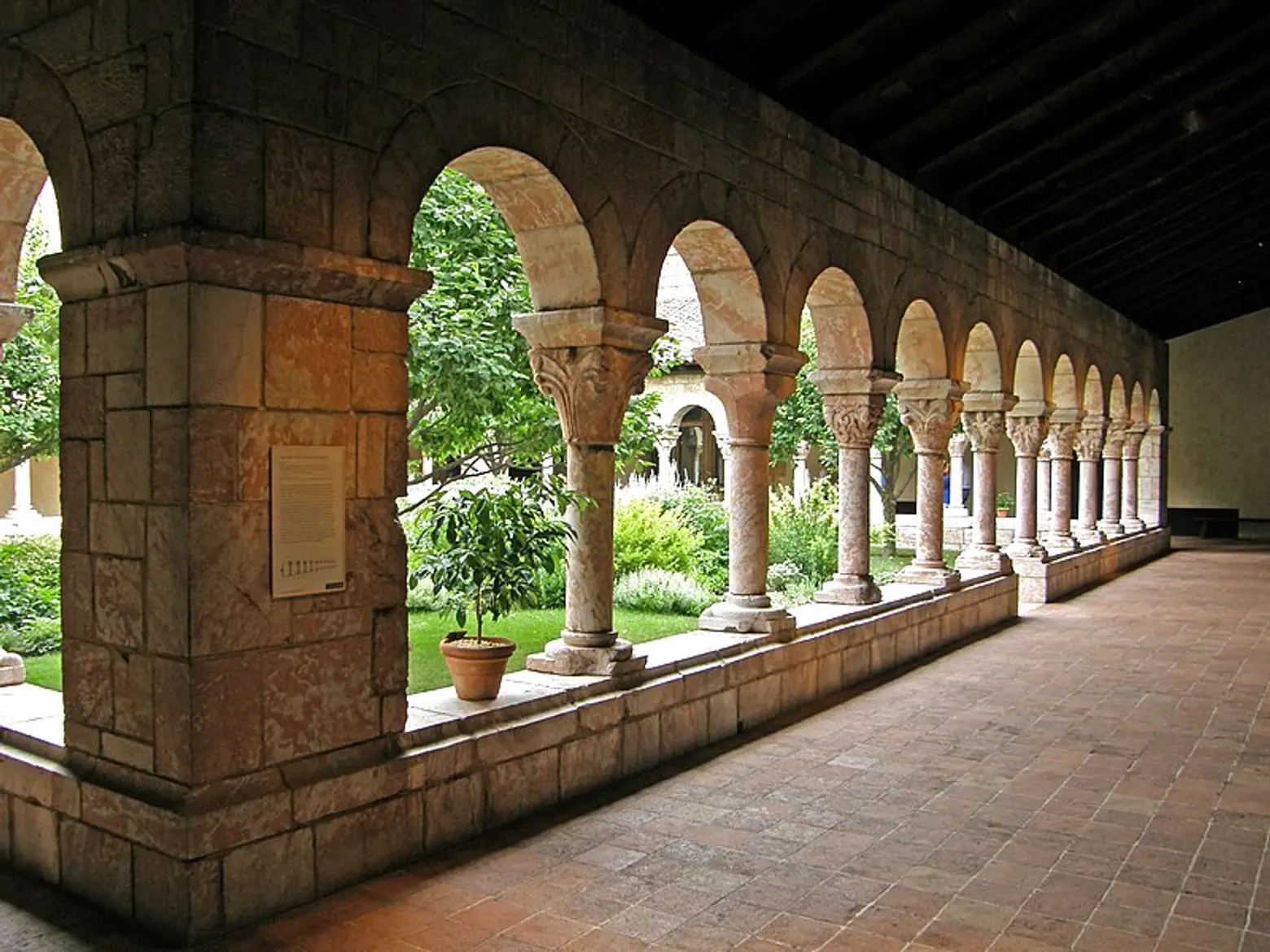
Photo by Kathleen Cole on Wikimedia
The Met Cloisters
Perched on a hill in Fort Tryon Park with stunning views of the Hudson River is the Metropolitan Museum of Art’s second location, the Met Cloisters. The museum, the only one in the U.S. dedicated exclusively to the art of this time period, takes visitors back to the Middle Ages through art, architecture, and multiple levels of landscaped gardens. The museum, constructed by architect Charles Collens in 1933, was built to resemble cloisters of medieval Europe and features more than 5,000 years of art from around the world.
The Shabazz Center
Housed in the restored Audubon Ballroom where Malcolm X was assassinated in 1965, the Malcolm X and Dr. Betty Shabazz Memorial and Educational Center is an institution dedicated to continuing the work of the two social justice activists. Designed by Davis Brody Bond, the center features a large mural highlighting key events of Malcolm X’s life, a bronze life-size sculpture of him, and six touch-screen kiosks in the lobby with information on both leaders.
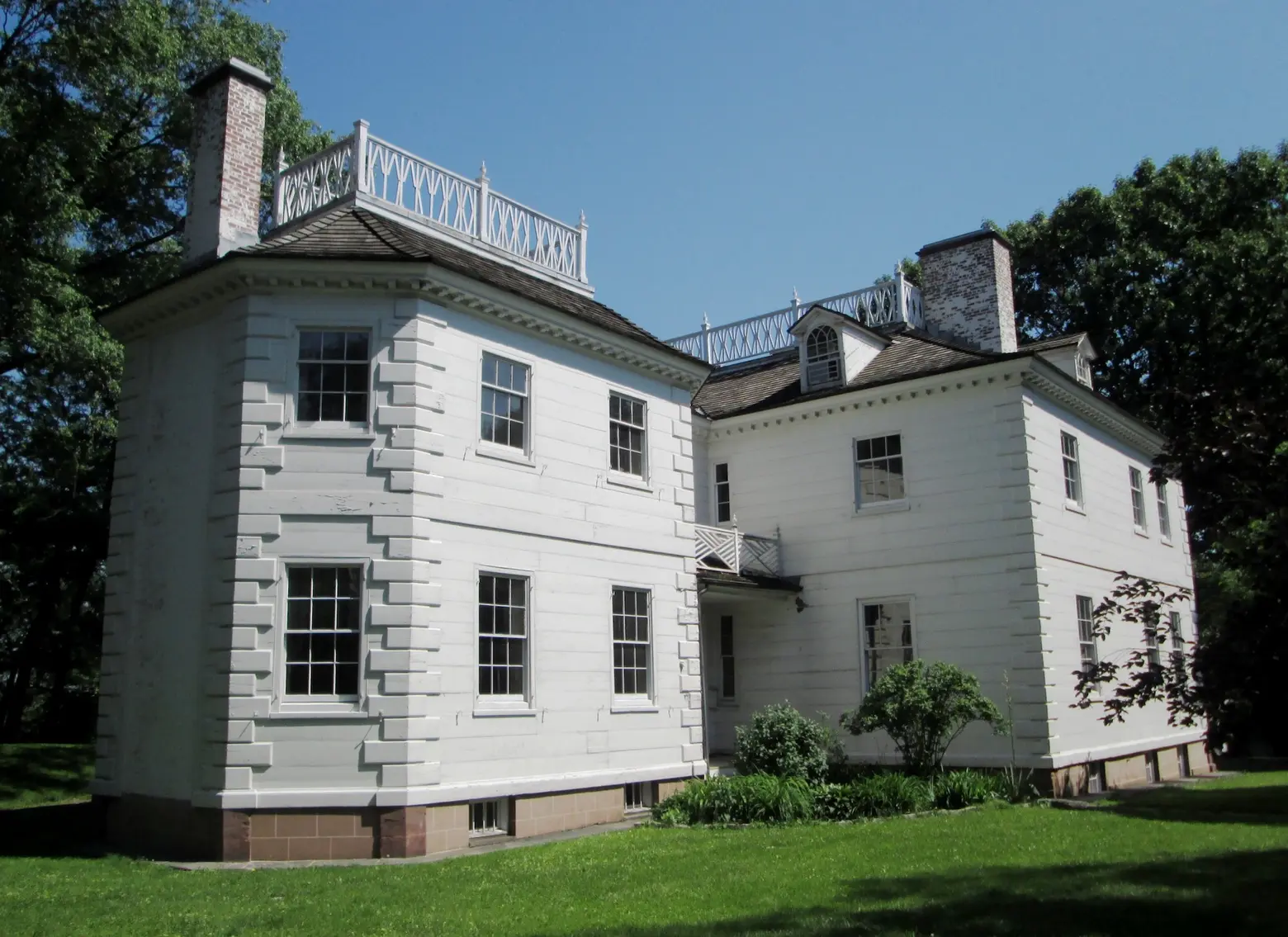
Photo by Beyond My Ken on Wikimedia
The Morris-Jumel Mansion
A must-visit for lovers of history and old homes, the Morris-Jumel Mansion is the only surviving free-standing, pre-Revolutionary War residence in Manhattan. The property was built in 1765 as a summer house for British military officer Roger Morris and his family. After the Morris family abandoned the estate at the outbreak of the Revolutionary War, General George Washington and his officers used the house as temporary headquarters, with its hilltop location a strategic advantage for observing troop movements, according to the museum.
After a short life as a tavern, the home, including the surrounding farmlands, was purchased by Eliza and Stephen Jumel in 1810. It was even briefly home to Aaron Burr, who Eliza married following her husband’s death, and is where Lin-Manuel Miranda wrote part of Hamilton. Located within the Jumel Terrace Historic District and designated a city landmark in 1967, the Federal-style Morris-Jumel Mansion has operated as a museum for over 115 years. The museum has reopened for tours, both guided and self-guided; free bilingual tours are held monthly. Learn more here.
Hispanic Society Museum & Library
For nearly 120 years, the Hispanic Society of America has provided a comprehensive look at the art and culture of Spain, Portugal, and Latin America. The museum and reference library’s extensive collection includes more than 900 paintings, 6,000 watercolors and drawings, 6,000 objects related to decorative art, 15,000 prints, and more than 300,000 books and periodicals. While the museum is currently closed for renovations, the Sorolla Vision of Spain Gallery and the library is open by appointment only.
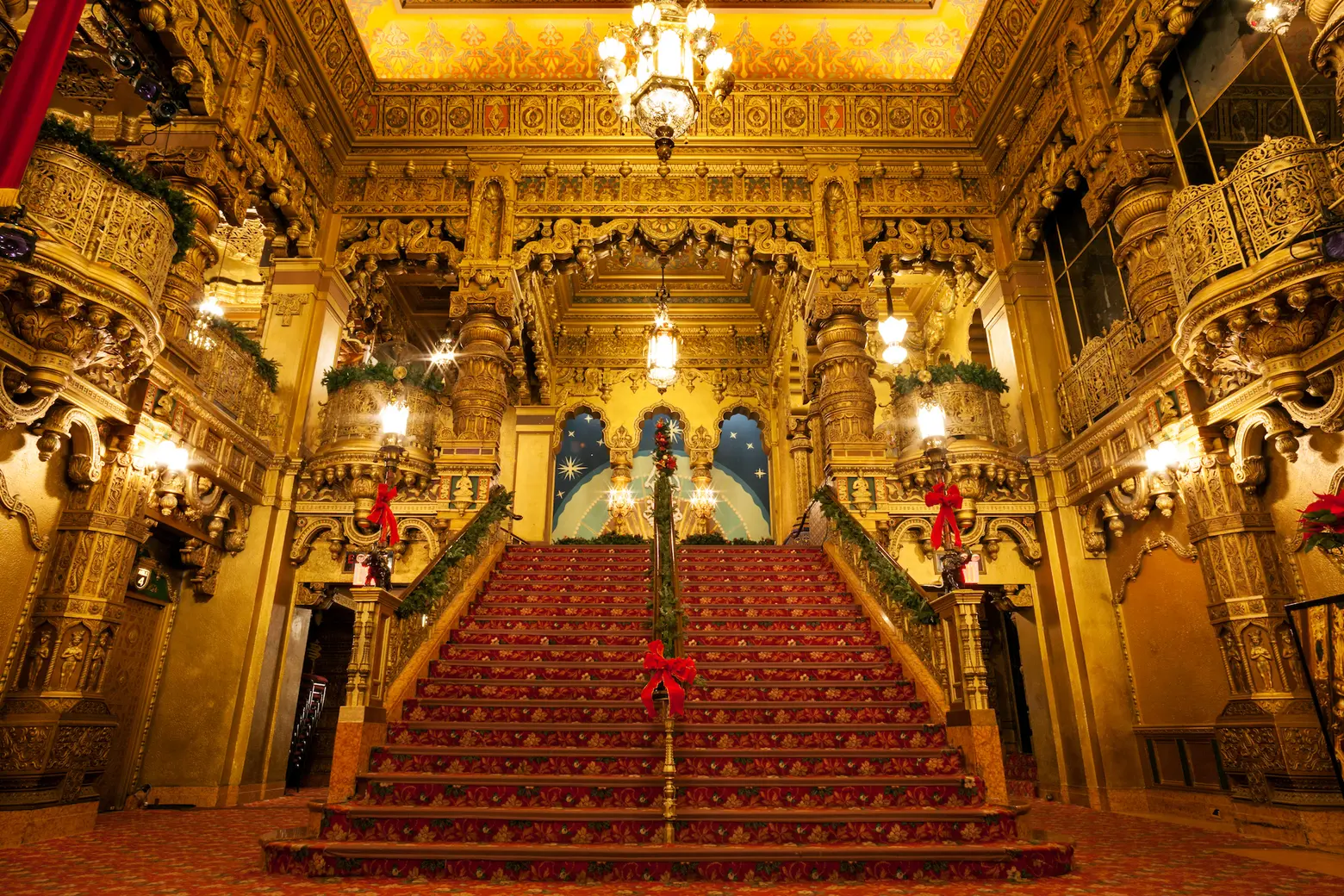
Photo by James and Karla Murray exclusively for 6sqft
United Palace Theatre
A sight to behold, the landmarked United Palace Theatre on Broadway between West 175th and 176th Streets opened in 1930 as one of five Loew’s “Wonder Theatres” that popped up across the city and New Jersey during this time. Designed by Thomas W. Lamb with interiors by Harold Rambausch (the mastermind behind the Waldorf Astoria and Radio City), the grand space features a mix of style influences, sometimes described as “Cambodian neoclassical,” and ornate details, like the lavish chandeliers, filigreed walls and ceilings, and hand-carved Moorish patterns. Today, the theater operates as a spiritual center and events space for the community.
Restaurants, bakeries, bars
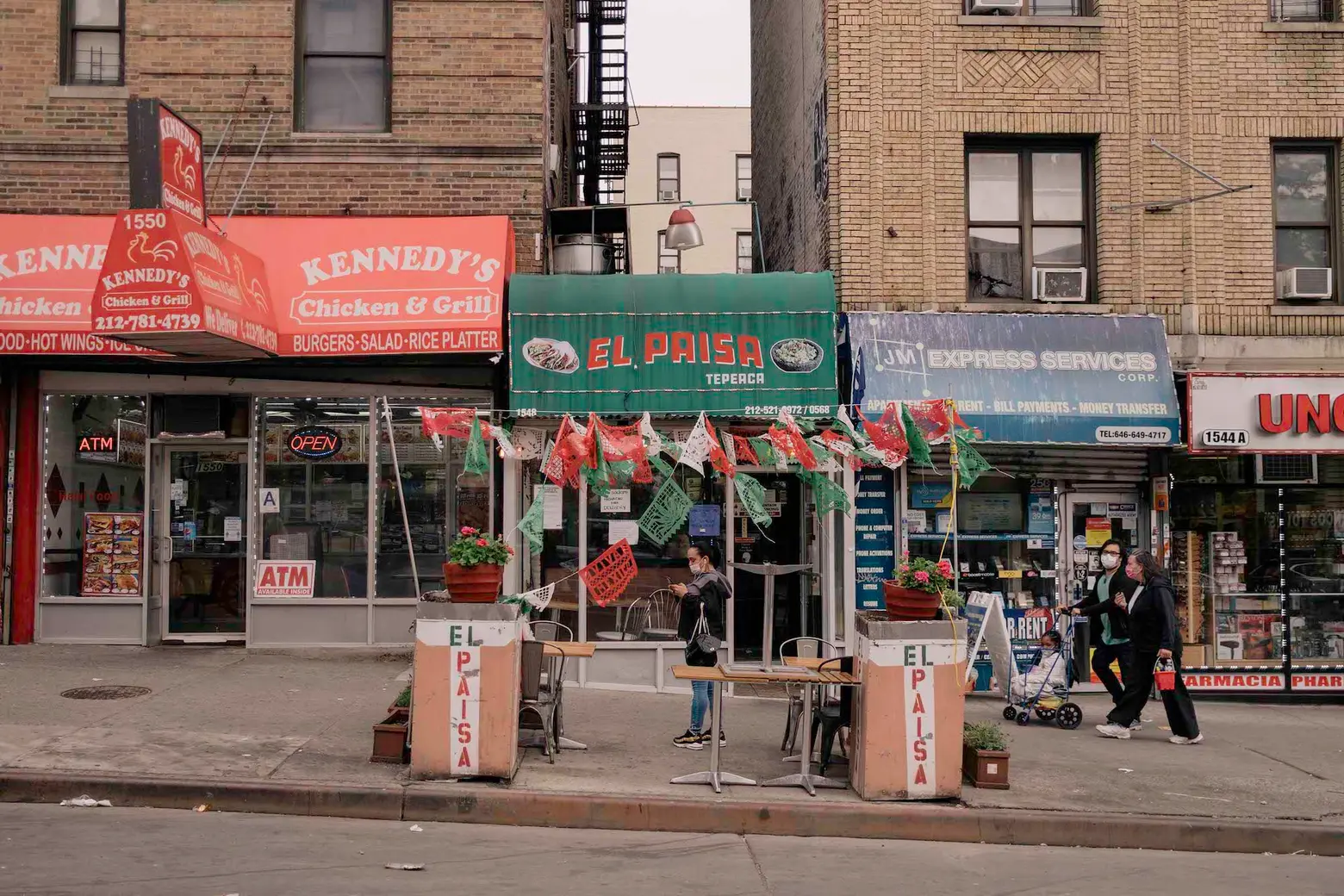
Photo by José A. Alvarado Jr. for NYC & Company
Tacos El Paisa
1548 St. Nicholas Avenue
New York City isn’t particularly known for its Mexican cuisine, but places like El Paisa on St. Nicholas Avenue could change that. While the tacos are an obvious must-try, El Paisa’s tortas and quesadillas are also great after a day of sightseeing.
Carrot Top Pastries
3931 Broadway
If you’re looking for a sweet treat and a cup of coffee, head to Carrot Top Pastries. The bakery has been an Uptown staple since 1979 (opening first in Inwood and then in Washington Heights in 1989) and has attracted a loyal group of carrot cake lovers. In addition to its famed cake, the shop offers a variety of cookies, pies, and classic breakfast and lunch items.
El Floridita
4162 Broadway
Since 1995, Floridita has served up a delicious fusion of traditional Cuban and Dominican food. The restaurant’s sandwiches are a big hit, with both Eater NY and The Infatuation urging their readers to try the Cubano sandwich. The $6 sandwich is made up of “crispy bread and crunchy pickles” that “balance out the fatty ham, pork roast, and swiss cheese,” Infatuation gushes. Other tasty items on the menu include mofongo, stews, and an assortment of meat and fish dishes.
Malecon
4141 Broadway
Don’t be distracted by Malecon’s six-page menu and just order what brought you there: the rotisserie chicken. The Dominican spot is a neighborhood favorite, with affordable prices and plenty of seating indoors and out.
Fort Washington Public House
3938 Broadway
With a cozy atmosphere, good food, and friendly staff, the Fort Washington Public House checks all of the boxes for a neighborhood watering hole. While it’s a fun place to grab a beer, the bar also offers a decent selection of bites, apps, and entrees, from tempura-battered shrimp and Korean cheesesteaks to vegan burgers and Greek grain bowls.
Elsa La Reina del Chicharron
1249 St. Nicholas Avenue
Here to meet your chicharrón cravings, Elsa La Reina del Chicharron has reigned supreme in serving up fried pork for decades. Add rice, beans, and a side of tostones, and you’ll be quite happy.
Parks
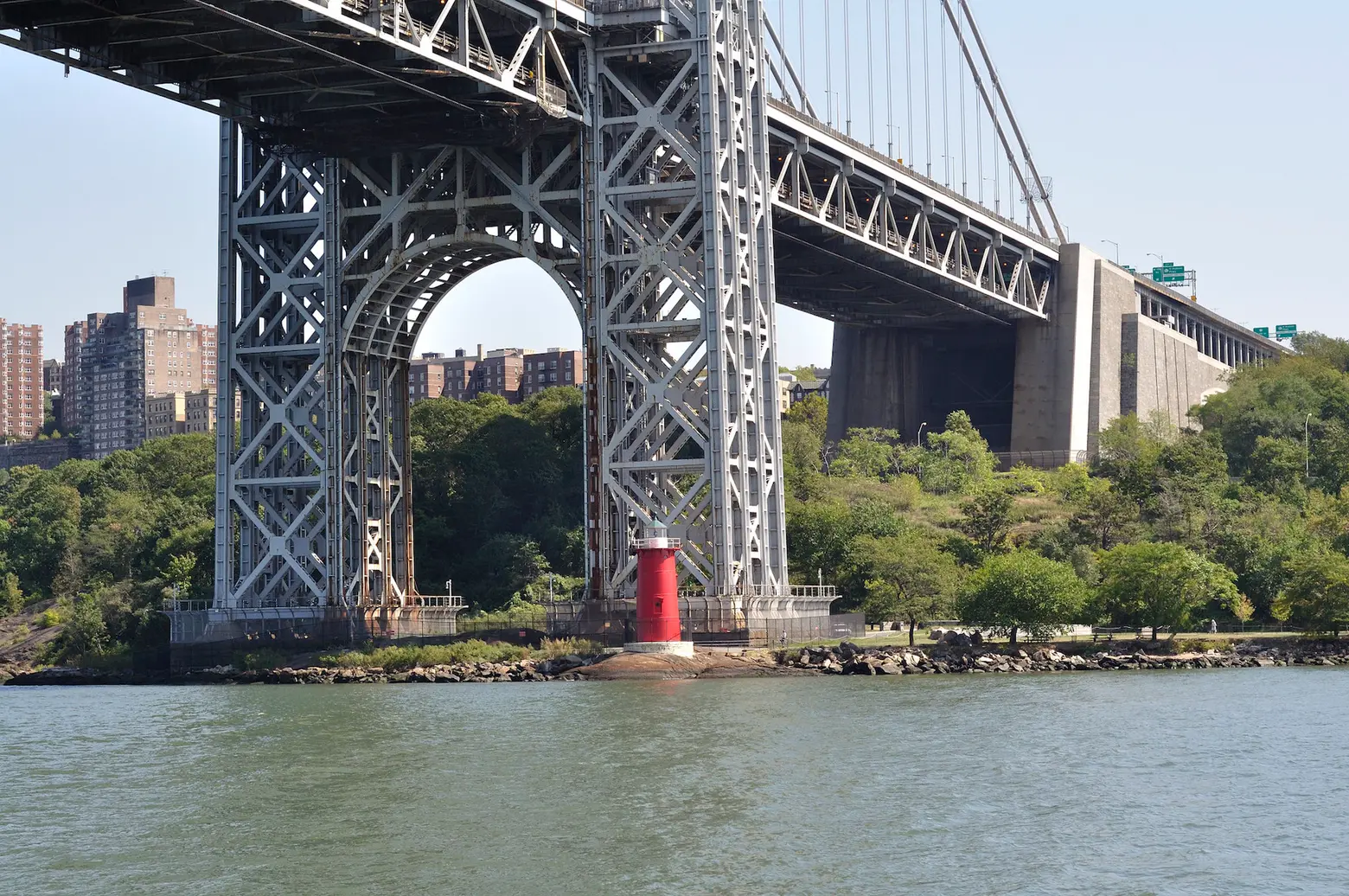
Photo by Johan Wieland on Flickr
Fort Washington Park
Home to Manhattan’s only lighthouse, 160-acre Fort Washington Park is located along the Hudson River, offering picture-perfect views of the New Jersey Palisades and the George Washington Bridge. In addition to its scenic vistas, the park’s Revolutionary War roots and early bright red lighthouse attract history buffs and lovers of the popular 1942 children’s book “The Little Red Lighthouse and the Great Gray Bridge.” The popularity of the book, which encouraged readers to visit the park, helped save the structure from demolition. The lighthouse was added to the National Register of Historic Places in 1979.
Bennett Park
Located at the highest point of land and once used as a strategic point by George Washington during the Revolutionary War, Bennett Park is a historic park with some of the best views of the George Washington Bridge. At the park, located between West 183rd and 185th Streets, a marble and granite stele commemorates the Battle of Fort Washington.
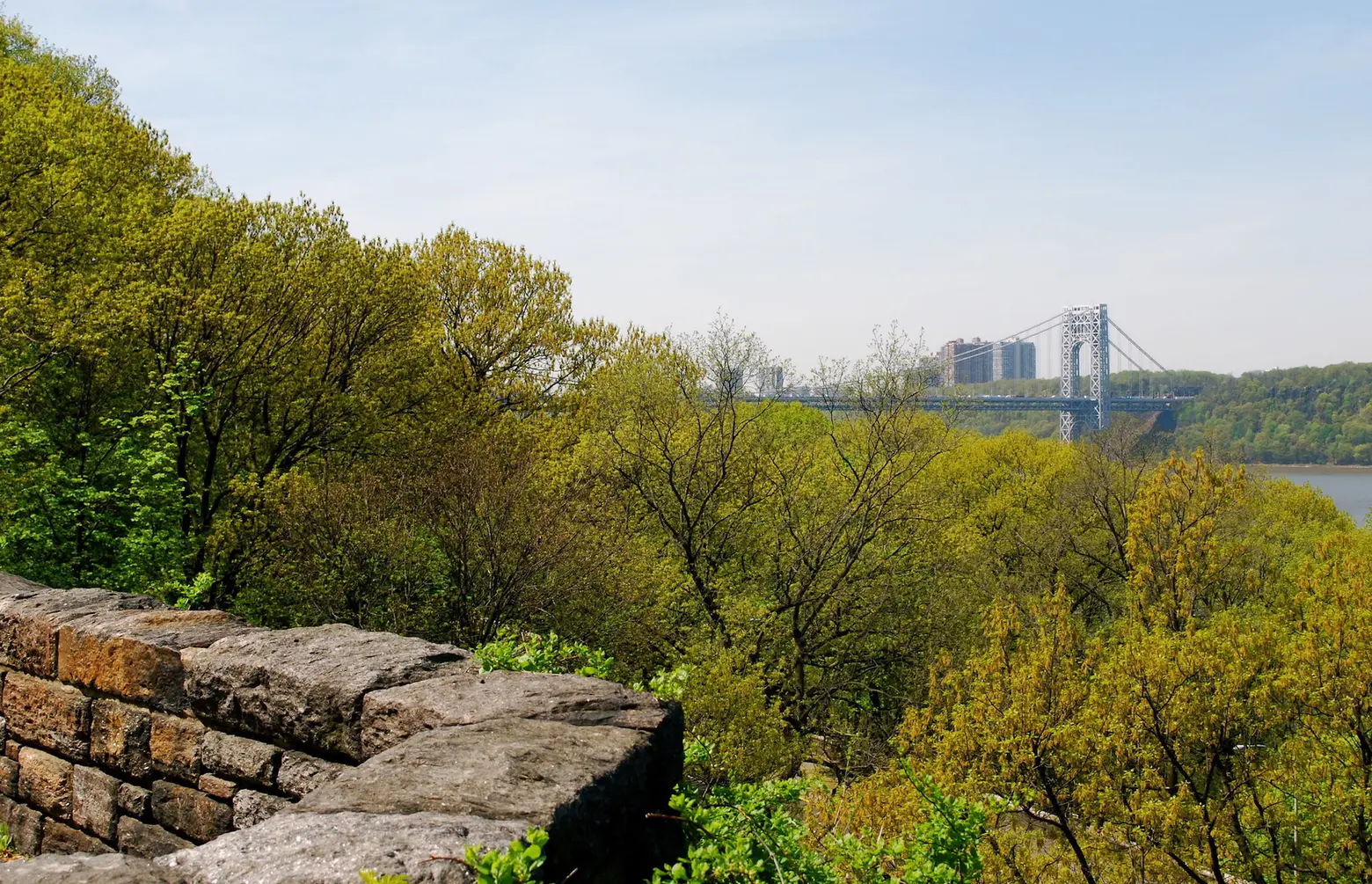
Photo by Laura LaRose on Flickr
Fort Tryon Park
One of New York City’s most scenic parks can be found in Washington Heights. Developed by John D. Rockefeller Jr. and designed by Frederick Olmsted Jr., Fort Tryon Park sits at one of the highest points in Manhattan, providing magical views of the Hudson River and Palisades. The 67-acre park has eight miles of paths, the largest public garden in New York, the largest dog run in the borough, and of course, the Cloisters.
Highbridge Park
On the eastern side of the neighborhood, Highbridge Park stretches between 155th Street and Dyckman Street along the Harlem River. Named after the city’s oldest standing bridge which connects the South Bronx and Upper Manhattan, Highbridge Park is home to the city’s first mountain biking course, a skatepark, playgrounds, ballfields, and natural landscape perfect for recreational and passive activities. Visitors will also be able to see the 200-foot-tall High Bridge Water Tower, built in the mid-19th-century as part of the Croton Aqueduct water system, and walk across the High Bridge, which recently reopened as a pedestrian bridge.
Places unique to the neighborhood
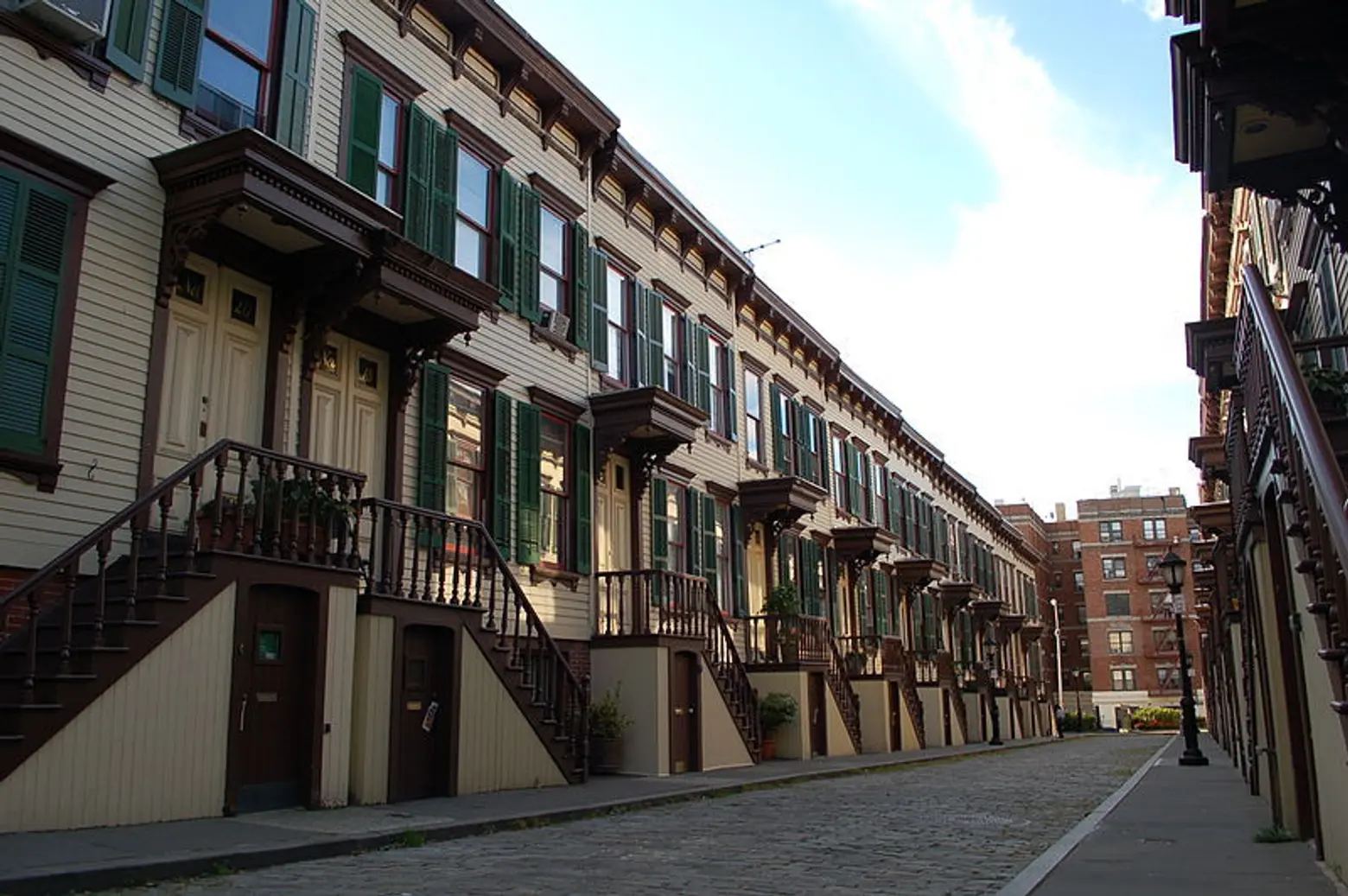
Photo via Wikimedia
Sylvan Terrace
One of the best secret streets in New York, Sylvan Terrace consists of a one-block stretch of cobblestone connecting St. Nicholas Avenue and Jumel Terrace between 160th and 162nd Streets. Built as the carriage drive of the Morris Jumel Mansion, the street has two rows of 20 wooden homes. Designed by Gilbert R. Robinson Jr., the homes were rented by “laborers and working-class civil servants,” as Atlas Obscura reported. By the middle of the 20th century, the charming homes had fallen into disrepair. But after the city’s Landmarks Preservation Commission designated the Jumel Terrace Historic District in 1970, including Sylvan Terrace, the residences were restored with a cohesive look, including cornices and wooden shutters.
Audubon Park Historic District
Named for naturalist John James Audubon, this Washington Heights historic district is comprised of 19 apartment buildings and a single free-standing house. Stretching five blocks from West 155th Street to West 158th Street and from Broadway and Edward M. Place to Riverside Drive West, the district was designated in 2009 for its “cohesive landscape” of Beaux-Arts, Renaissance Revival, Mediterranean Revival, and Arts and Crafts style homes. It’s also noteworthy as the estate of Audubon, who purchased 20 acres overlooking the Hudson River in 1841, just after publishing The Birds of America. After her husband’s death and the onset of financial troubles, Lucy Audubon started selling parcels of the estate for development starting in 1860. The area subsequently became known as Audubon Park, according to the Landmarks Preservation Commission’s designation report.
With the arrival of the Broadway-Seventh Avenue subway line in 1904, this area’s population exploded, and with it, the need for apartment buildings and commercial space. Architectural standouts built between 1905 and 1930 include Emery Roth-designed 611 West 158th Street, the grand residential building at 790 Riverside Drive, and Medieval Revival-style homes on the west side of Riverside Drive West.
“The curving streets and dramatic vistas that result from the hilly topography continue to define the neighborhood as a distinctive enclave of apartment buildings with a powerful sense of place,” the LPC report reads. Adjacent to the Audubon Park Historic District is Audubon Terrace, a landmarked complex consisting of early-20th-century Beaux-Arts buildings.
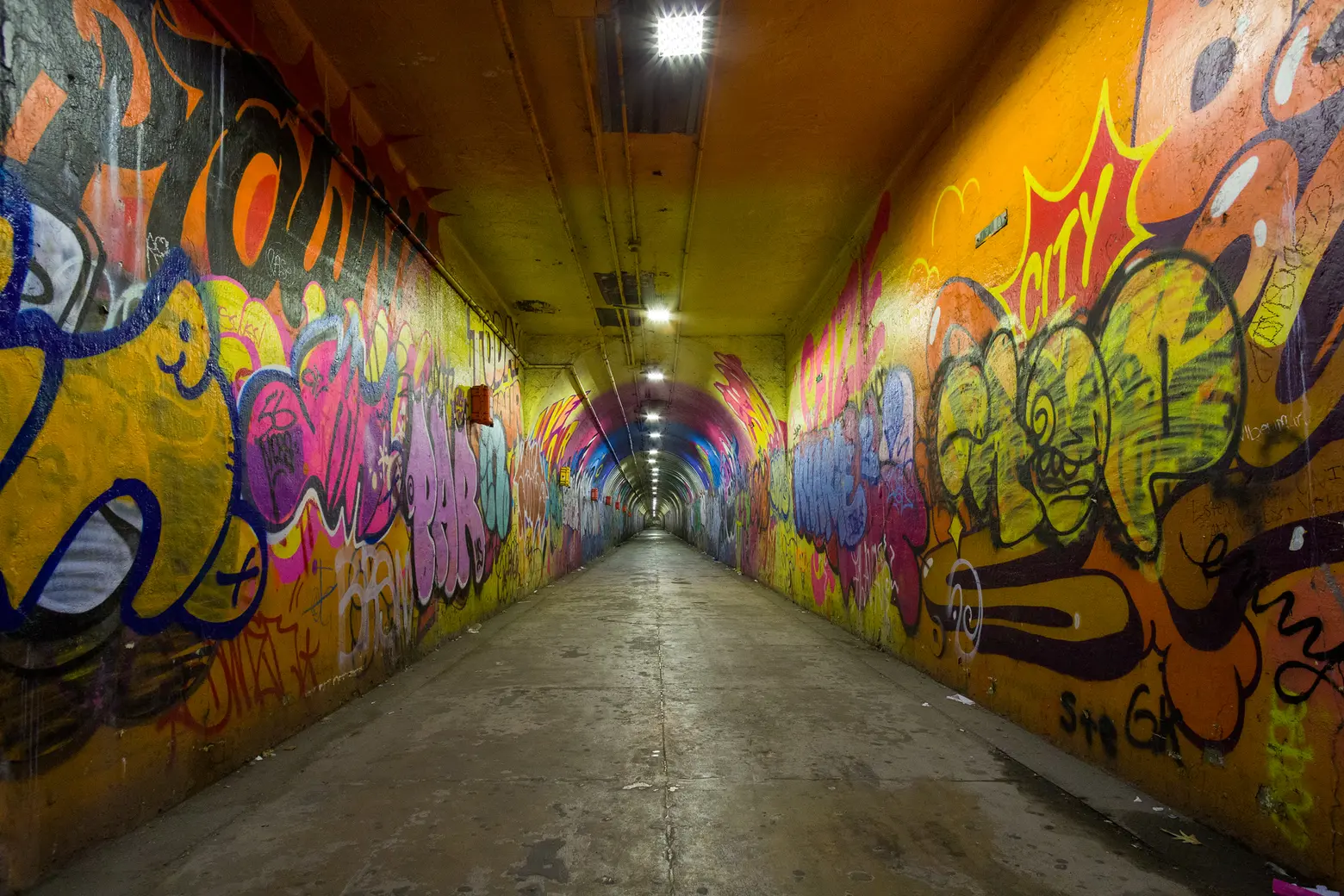
Photo © James and Karla Murray
191st Street station tunnel
The deepest subway station in New York City is in Washington Heights. The 1 train stops at 191st Street station, situated roughly 173 feet below ground. A nearly 1,000-foot tunnel, dubbed the “Tunnel Street,” connects the station to Broadway. Since it’s operated by the city’s Department of Transportation, the street is not part of the subway station, making it the only underground street in the city. In 2015, DOT put out a call for large-scale murals and selected five artists who each were given a 200-foot section of the wall to paint. While much of their work has been covered over with graffiti, the bright street-art-filled tunnel remains an experience unique to the neighborhood.
+++
NYC & Company, the city’s tourism agency, joined Warner Bros. Pictures in celebrating In The Heights with a new travel guide highlighting the neighborhood of Washington Heights as well as an ongoing campaign to bring attention to the city’s Latino heritage. In addition to the Heights, the city’s Latino Experience in NYC showcases shops and experiences in East Harlem, Bushwick, Ridgewood, Sunset Park, and Corona.
